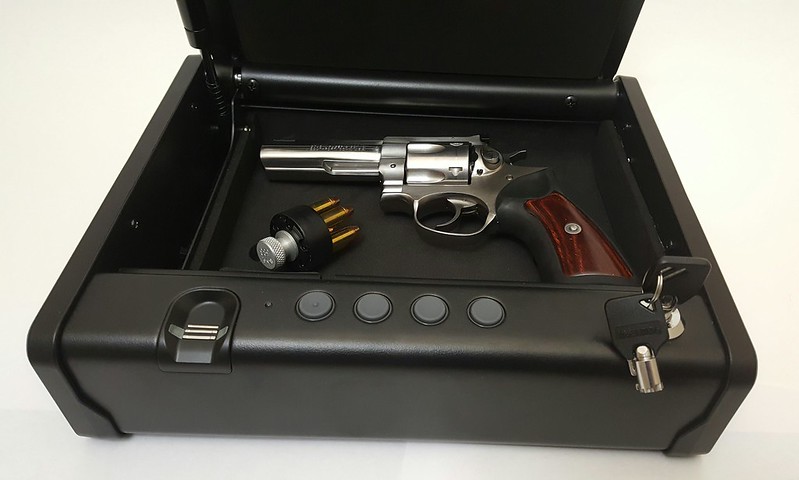The following is a guest post from Michael Denmon. Michael is a Dad who is working on being a better man, one project at a time. Catch up with his latest attempts at Dad Level Viking.
One of the most common arguments against owning and keeping guns in the home is that it is not safe for children who reside there. While gun accidents amongst children is a real tragedy, it is a preventable tragedy.
That is why I say that the very first law of owning or handling a firearm is to have respect for the power they wield. That power brings with it the responsibility to learn about their safe use and function, and equally as important, their proper storage in a safe location that can be monitored and controlled by someone who has been educated in how to handle them.
Some reasons for storing firearms safely include:
- Protecting young children
- Preventing the untrained from handling them and having accidents
- Securing them against theft
As gun laws and the need for self defense change, we find gun owners carrying their weapons to many locations outside of the home. For every reason to secure your handgun there are solutions that vary by suitability and cost.
Where is Safe Storage Needed?
Most people consider their home as the primary place to secure firearms, because that is where they are kept 99% of the time. If the home is the only location that fits your needs, you can use anything from a walk-in safe to a simple locking mechanism for the action of your weapon. However, if you carry your handgun outside of the home, either for practice or self-defense, you need to think about securing the weapon while traveling.
You will not always be able to carry your handgun with you due to varying laws and regulations that may prohibit even the legal carry of a weapon inside of an establishment. At times like these a secured storage system which prohibits unapproved access can be a valuable deterrent against theft or untrained persons. Safe storage while carrying your weapon in public is also a concern, and various types of equipment are available to help secure your weapon to an extent while holstered, but these types of devices really depend more on how you carry your weapon and what kind of weapon you carry.
Types of Safe Storage
Ease of access plays an equally important part in choosing the correct securing system for your handgun. While the primary goal for most gun owners is to have their weapons secured, the secondary goal is to have easy and quick access should the need to wield them become apparent. For this reason, choosing the appropriate safety system for your needs is critical to feeling secure yet confident in your system.
Cheap and Easy
A cable lock system is a cable that goes through the action train of the typical semi-automatic handgun where the slide moves backward and forward with each shot. Having a cable through this action area prevents the gun from functioning properly, therefore disabling the ability to fire the weapon. The cable connects into a locking system that cannot be removed without some serious intent.
Additionally, there is a trigger locking system for the trigger area of the handgun. Essentially it fits and locks around the trigger area of travel on a handgun (semi-automatic or revolver) and prevents the trigger from being depressed. Without the trigger being depressed, the hammer system cannot go into action to fire a round of ammunition. This system is a little harder to remove without a key when compared to the cable system. However, the trigger lock system is more specific to the type of gun being secured, meaning differing models and types may require separate styles of locks. A cable system is more one-size-fits-all in this comparison.
If You Own One of Everything
Someone who has many handguns, especially if they also own long guns like rifles or shotguns, may want to opt for the larger gun safe option for security reasons. The gun safe can vary in sizes and technological safety features, but pretty much all of them come with a way to shut and lock your guns away from those who should not be able to access them. The drawback with this option is the size and bulkiness that generally relegates the fixture into a closet or garage or secret batcave. This could be problematic if someone breaks into the home at night. On the other hand, you can purchase models that are fireproof should the unimaginable happen and your home catch on fire.
If You Need It Now
If access to your handgun within seconds is your need, then a small vault or fingerprint safe is what you may want to choose. They are relatively small, allow you to access them without rummaging around for a key, and can even be used in a mobile situation, like when traveling. The downside is that they are mobile, so unless they are bolted down, a thief could walk away with the whole case and break into it later.
In the end, the best choice will be the choice that is best for you. While the options may seem varied in their pros and cons, I hope this information helps you in deciding to make your handgun safer and how to do so to the best of your own needs.
Photo courtesy of Unmatched Value on Flickr.



